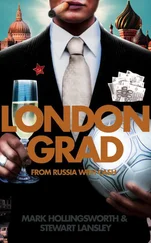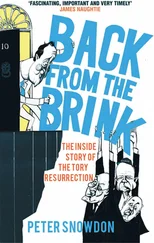Andrew Sorkin - Too Big to Fail - The Inside Story of How Wall Street and Washington Fought to Save the FinancialSystem--and Themselves
Здесь есть возможность читать онлайн «Andrew Sorkin - Too Big to Fail - The Inside Story of How Wall Street and Washington Fought to Save the FinancialSystem--and Themselves» весь текст электронной книги совершенно бесплатно (целиком полную версию без сокращений). В некоторых случаях можно слушать аудио, скачать через торрент в формате fb2 и присутствует краткое содержание. Жанр: Старинная литература, на английском языке. Описание произведения, (предисловие) а так же отзывы посетителей доступны на портале библиотеки ЛибКат.
- Название:Too Big to Fail: The Inside Story of How Wall Street and Washington Fought to Save the FinancialSystem--and Themselves
- Автор:
- Жанр:
- Год:неизвестен
- ISBN:нет данных
- Рейтинг книги:4 / 5. Голосов: 1
-
Избранное:Добавить в избранное
- Отзывы:
-
Ваша оценка:
- 80
- 1
- 2
- 3
- 4
- 5
Too Big to Fail: The Inside Story of How Wall Street and Washington Fought to Save the FinancialSystem--and Themselves: краткое содержание, описание и аннотация
Предлагаем к чтению аннотацию, описание, краткое содержание или предисловие (зависит от того, что написал сам автор книги «Too Big to Fail: The Inside Story of How Wall Street and Washington Fought to Save the FinancialSystem--and Themselves»). Если вы не нашли необходимую информацию о книге — напишите в комментариях, мы постараемся отыскать её.
Too Big to Fail: The Inside Story of How Wall Street and Washington Fought to Save the FinancialSystem--and Themselves — читать онлайн бесплатно полную книгу (весь текст) целиком
Ниже представлен текст книги, разбитый по страницам. Система сохранения места последней прочитанной страницы, позволяет с удобством читать онлайн бесплатно книгу «Too Big to Fail: The Inside Story of How Wall Street and Washington Fought to Save the FinancialSystem--and Themselves», без необходимости каждый раз заново искать на чём Вы остановились. Поставьте закладку, и сможете в любой момент перейти на страницу, на которой закончили чтение.
Интервал:
Закладка:
Paulson stammered for a moment, then recovered and continued with what he clearly hoped was a soothing message. “Matt, there’s turbulence in our capital markets, and it’s been going on since August. We’re all over it, we’re looking for ways to work our way through it. I’ve got great confidence in our markets, they’re resilient, they’re flexible, but this has taken some time and we’re focused on it.”
Fuld waited with growing impatience for Lauer to ask about the implications of the Bear Stearns bailout. “The Fed took some extraordinary steps over the weekend to deal with the Bear Stearns situation,” Lauer finally said. “It has some people asking: ‘Does the Fed react more strongly to what’s happening on Wall Street than they do to what’s happening to people in pain across the country, the so-called people who live on Main Street?’”
An exasperated Fuld thought Lauer’s question was just another example of the popular media’s tendency to frame complex financial issues in terms of class warfare, pitting Wall Street—and Paulson, Goldman’s former CEO—against the nation’s soccer moms, the Today show’s audience.
Paulson paused as he searched for his words. “Let me say that the Bear Stearns situation has been very painful for the Bear Stearns shareholders, so I don’t think that they think that they’ve been bailed out here.” He was obviously trying to send a message: The Bush administration isn’t in the business of bailouts. Period.
Then Lauer, quoting from the front page of the Wall Street Journal , asked, “‘Has the government set a precedent for propping up failing financial institutions at a time when its more traditional tools don’t appear to be working?’ In other words, they’re saying, is this now the wave of the future, Mr. Secretary? That financial institutions that get in trouble in the future turn to the government to get bailed out?”
It was a particularly poignant question; only nights before Paulson had railed on a conference call with all the Wall Street CEOs about “moral hazard”—that woolly economic term that describes what happens when risk takers are shielded from the consequences of failure; they might take ever-greater risks.
“Well, again, as I said, I don’t believe the Bear Stearns shareholders feel they’ve been bailed out right now,” Paulson repeated. “The focus is clearly, all of our focus is on what’s best for the American people and how to minimize the impact of the disruption in the capital markets.”

When she sat down at her desk Callan turned on her Bloomberg terminal and waited for Goldman Sachs to announce its results for the quarter, which the market would take as a rough barometer of the shape of things to come. If Goldman did well, it could give Lehman an added boost.
When Goldman’s numbers popped up on her screen, she was delighted. They were solid: $1.5 billion in profits. Down from $3.2 billion, but who wasn’t down from a year ago? Goldman handily beat expectations. So far, so good.
That morning, Lehman Brothers had already sent out a press release summarizing its first-quarter results. As Callan knew, of course, the numbers were confidence inspiring. The firm was reporting earnings of $489 million, or 81 cents per share, off 57 percent from the previous quarter but higher than analyst forecasts.
The first news-service dispatches on the earnings release were positive. “Lehman kind of confounded the doomsayers with these numbers,” Michael Holland, of Holland & Company, the private investment firm, told Reuters. Michael Hecht, an analyst with Bank of America Securities, called the quarterly results “all in all solid.”
At 10:00 a.m., a half hour after the market opened, Callan entered the boardroom on the thirty-first floor. Though Lehman’s results were already calming market fears, a great deal was still riding on her performance. Surely everyone listening in would ask the same questions: How was Lehman different from Bear Stearns? How strong was its liquidity position? How was it valuing its real estate portfolio? Could investors really believe Lehman’s “marks” (the way the firm valued its assets)? Or was Lehman playing “mark-to-make-believe”?
Callan had answers to all of them. She had prepped and studied and gone through dry runs. She had even rehearsed the numbers for a roomful of Securities and Exchange officials—hardly the easiest crowd—over the weekend, and they had left satisfied. She knew the numbers cold; she knew by heart the story that needed to be told. And she knew how to tell it.
The markets roared their approval of the earnings report. Shares of Lehman surged while the credit spreads tightened. Investors now perceived the risk that the firm would fail had diminished. All that had to happen now was for Callan to supply the punctuation. She took a sip of water. Her voice was raspy after talking nonstop for four straight days.
“All set?” asked Ed Grieb, Lehman’s director of investor relations.
Callan nodded and began.
“There’s no question the last few days have seen unprecedented volatility, not only in our sector but also across the whole marketplace,” she said into the speakerphone, as dozens of financial analysts listened. Her voice was calm and steady. For the next thirty minutes she ran through the numbers for Lehman’s business units, carefully elucidating the specifics, or, in the jargon of Wall Street, providing the “color.” She put particular emphasis on the firm’s efforts to reduce leverage and increase liquidity. She spelled it all out in painstaking, mind-numbing detail.
It was a stellar presentation. The analysts on the call seemed impressed by Callan’s candor, her command of the facts, her assuredness, and her willingness to acknowledge the outstanding problems.
But she wasn’t finished yet; next came the questions. First up was Meredith Whitney, an analyst with Oppenheimer, who had made her name as an unsparing banking critic the previous fall with the accurate prediction that Citigroup would be forced to cut its dividend. Callan, as well as every other Lehman executive in the room, held their breaths as they waited for Whitney to start probing. “You did a great job, Erin,” Whitney said, to everyone’s amazement. “I really appreciate the disclosure. I’m sure everyone does.”
Callan, trying hard not to show her relief, knew then that she had pulled it off. If Whitney was buying it, all was well. As they spoke, shares of Lehman continued spiking. The markets were buying it, too. The stock would end the day up $14.74, or 46.4 percent, to $46.49, for the biggest one-day gain in the stock since it went public in 1994. William Tanona, an analyst with Goldman Sachs, raised his rating on Lehman to “buy” from “neutral.”
When the session ended, the excitement at Lehman was palpable. Gregory rushed over to give Callan a big hug. Fuld was ecstatic. “The only complaint I have is that you shouldn’t have hung up on the call. Because as long as you were on there, the stock kept coming up,” he told her. Later, as she went down to the bond-trading floor, she passed by the desk of Peter Hornick, the firm’s head of collateralized debt obligation sales and trading. He held out his palm, and she slapped him a high five.
For a brief, shining moment, all seemed well at Lehman Brothers.

Outside Lehman, however, skeptics were already voicing their concerns. “I still don’t believe any of these numbers because I still don’t think there is proper accounting for the liabilities they have on their books,” Peter Schiff, president and chief global strategist of Euro Pacific Capital, told the Washington Post . “People are going to find out that all these profits they made were phony.”
Читать дальшеИнтервал:
Закладка:
Похожие книги на «Too Big to Fail: The Inside Story of How Wall Street and Washington Fought to Save the FinancialSystem--and Themselves»
Представляем Вашему вниманию похожие книги на «Too Big to Fail: The Inside Story of How Wall Street and Washington Fought to Save the FinancialSystem--and Themselves» списком для выбора. Мы отобрали схожую по названию и смыслу литературу в надежде предоставить читателям больше вариантов отыскать новые, интересные, ещё непрочитанные произведения.
Обсуждение, отзывы о книге «Too Big to Fail: The Inside Story of How Wall Street and Washington Fought to Save the FinancialSystem--and Themselves» и просто собственные мнения читателей. Оставьте ваши комментарии, напишите, что Вы думаете о произведении, его смысле или главных героях. Укажите что конкретно понравилось, а что нет, и почему Вы так считаете.












